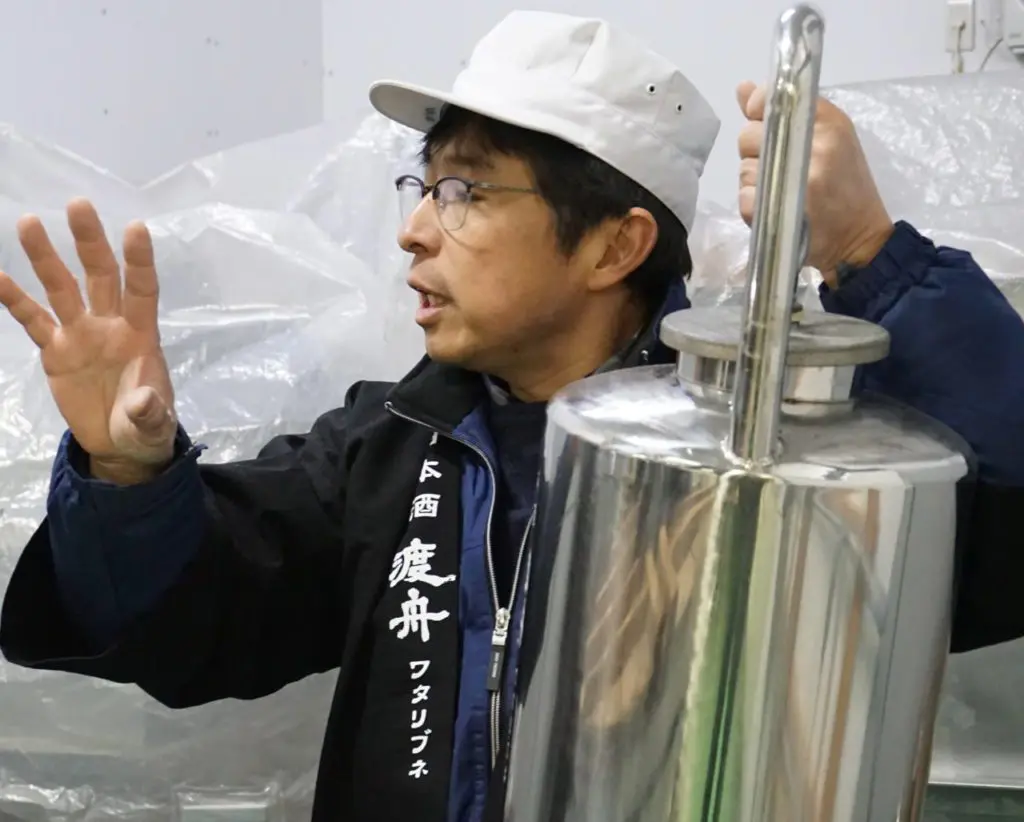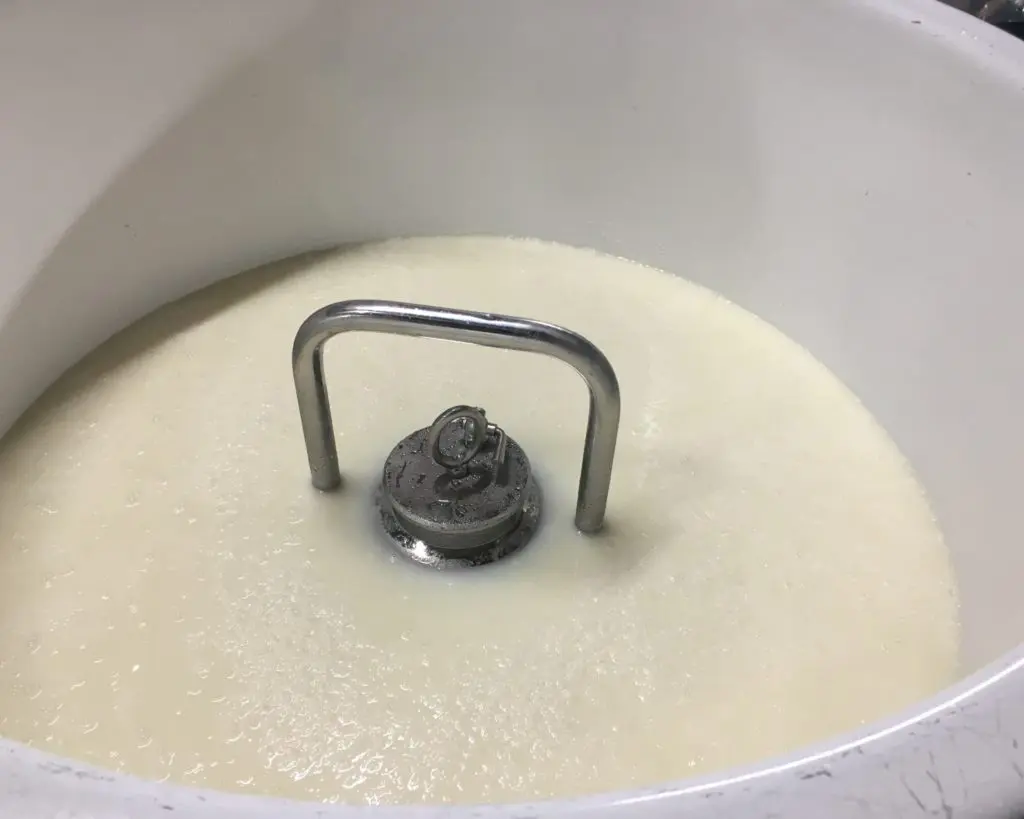Over the years, sake yeasts have been developed by breweries and sake research institutes. For the most part, sake makers use yeast that is maintained by the Central Brewers Association, or “Chuokai.” These yeasts are numbered, with #6 and #7 being some of the first yeasts that were developed. These yeasts are lower in aromatics and produce richer, more umami styles of sake.
Starting with #9 and moving up to #18, sake yeasts are considered “ginjo yeasts” because they make fruitier and more aromatic sake. This is not to say that #9 or #11 aren’t used for junmais, but it is true that the higher the number, the later it was developed, and the more it is used for more modern, fruity sake. There are also foamless versions of yeasts that have a 01 added to the number, as in, #901, #1401, etc.
While most sake makers buy yeast from the Central Brewers Association, many brewmasters use in-house yeast that started as a Central Brewers yeast or a strain from their prefecture. These toji have then maintained the yeasts themselves in the brewery. Some sake makers have experimented with yeast derived from new sources. The Nakao Brewery, whose sake we import, derived a yeast from apple rind after experimenting with 2,000 sources of yeast. Amabuki in Kyushu makes sake using yeast derived from flowers. The Kochi Prefecture Sake Research Institute has taken experimentation to an extreme by sending sake yeast into outer space to see how it reacted. We talk more about Kochi’s work on yeasts in our section about Kameizumi, one of our sakes.
There are three main methods of making the yeast starter.
KIMOTO: The oldest, and most traditional is “kimoto,” which is made by mushing and mashing koji rice and water in large, usually wood, buckets with paddles at the beginning of the process. This is like kneading dough as it removes the oxygen and enables lactic acid to be produced naturally. This method dates back to the 1600s, or earlier. Kimotos tend to be earthy, layered, and higher in acidity.
YAMAHAI: In the early 1900s, brewers experimented with not mushing and mashing and just covering the shubo and keeping it cold. This method was named “yamahai,” an abbreviation of “yama-oroshi hai-shi,” which means to quit mushing and mashing. In yamahai and kimoto, lactic acid is not added but rather produced naturally. It takes 30 days to make the shubo using kimoto or yamahai. Yamahais are also layered, umami-driven, and higher in acidity. They can have “gamey” or funky aromas with notes of petrol and butterscotch.
SOKUJO: The third method, “sokujo,” meaning the “fast method,” started in the early 1900s, called as a safer and quicker alternative to yamahai. In sokujo, lactic acid is added to water, koji, and brewing rice before the yeast to create a sterile environment—the lactic acid neutralizes bacteria. Sokujo takes 7-10 days and the resulting style is clean. Sokujo is not stated on the label because it is standard, whereas yamahai and kimoto are stated because they are specialty methods.
Koon toka, (ko-on toe-kah), high temperature saccharification, is a permutation on sokujo.
The method was invented by Kiyomara Nakao, the 3rd generation owner and brewmaster at the Nakao Brewery, makers of Maboroshi and Seikyo, brands we import. Kiyomara developed this method in parallel with his discovery of an apple yeast for sake. The yeast needed a more sterile environment and koon toka was his solution.
In koon toka, koji rice, brewing rice, and water are mixed and heated to 55 degrees celsius, 131 Fahrenheit, to eliminate unwanted bacteria and speed up saccharification. After 8 hours, roughly, the tank is rapidly cooled to 40 degrees celsius and lactic acid is added. Next, this brew is transferred to the shubo tank into which more koji rice, brewing rice, and water are added.
Koon toka has been adopted by many breweries, including Eiko Fuji, and further perfected by the Nakao Brewery. The Nakao Brewery developed their koon toka tank with Yabuta, the maker of the most widely used sake press. It is the only koon toka tank of its kind and the brewery received a Certificate of Merit from the Japanese Brewers Association in 1960 for their advancement of this method. As should be expected of an even more safe sub-method of sokujo, koon toka method sakes will be very clean in flavor and style. They can range from dry to fruity.
Regardless of the method of making the shubo, sake makers closely monitor and control its development. They keep the shubo cold by wrapping the small tanks with cooling jackets. These circulate cold water around the tank to cool it. They also immerse “dakki,” steel buckets that are filled with ice water, sealed, and then immersed in the brew. Breweries also tightly cover the shubo, although there are a few breweries that are practicing open air, wild yeast fermentation.

